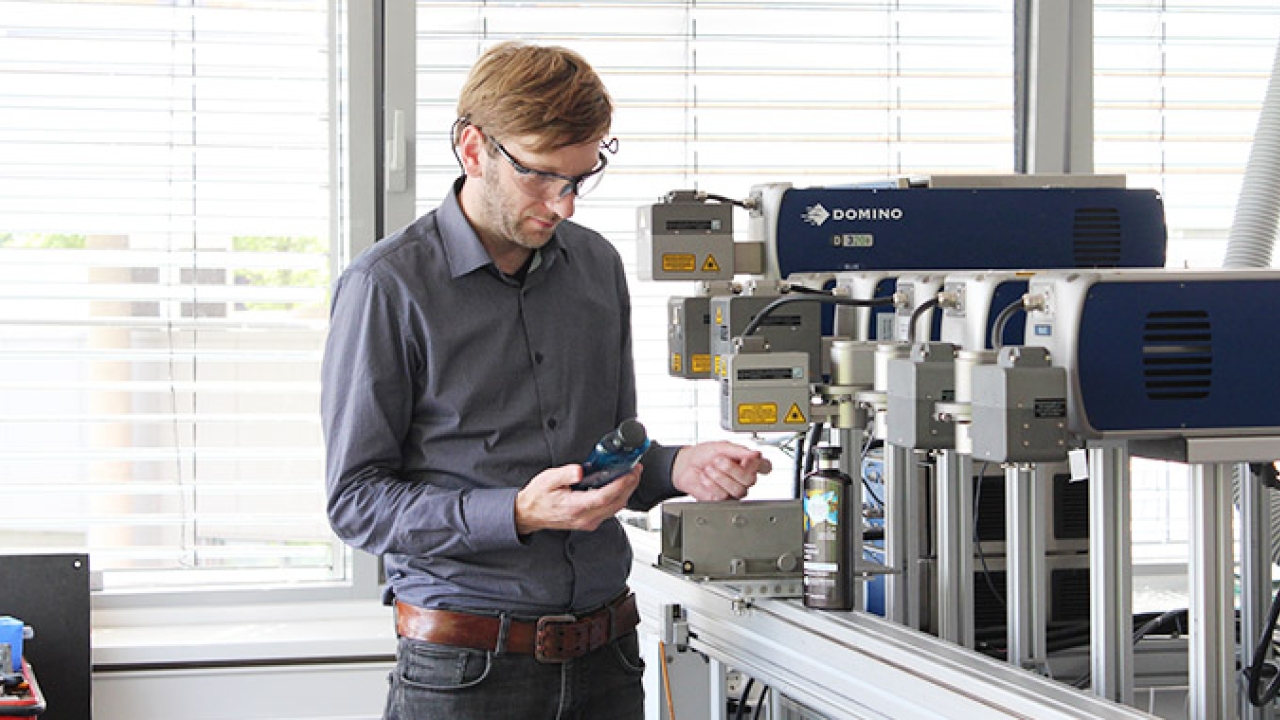Domino develops tactile-coded bottle for P&G
Domino Printing Sciences (Domino) has teamed up with Procter and Gamble (P&G) to develop an inclusive, tactile technology for product labeling, helping visually impaired consumers distinguish personal care products.

According to Domino, less than 10 percent of people in the US with the highest visual impairment can read the tactile writing system. Therefore P&G and Domino sought to develop a more universal alternative to make the bottles more accessible to anyone with partial or complete sight loss.
‘Most shampoo and conditioner bottles are designed to look and feel the same,’ said P&G’s special consultant for inclusive design, Sumaira Latif, who is registered blind herself. ‘We realized that we have a huge opportunity to improve our products and packaging and to encourage other businesses to do the same.’
‘We were invited to visit Domino’s specialist laser testing labs in Hamburg, initially to discuss the requirements for the project, and then again for a two-day working session to identify the best possible solution. Together, we chose the Herbal Essences bio:renew range of shampoo and conditioners as a trial product, which could be easily marked by Domino’s D-Series CO2 laser coders to create a differentiating tactile marker,’ added Kevin Higgins, engineer at P&G.
Dr Stefan Stadler, team Lead at the Laser Academy, led the collaborative task with Latif and her team to find the best approach. They identified the bottom of the bottle, where the plastic is at its thickest, as the best location for the coding, where it would be easily identifiable without compromising the integrity of the packaging.
‘The chosen design features, a row of raised lines on the bottom of the back of the shampoo bottles — S for shampoo, S for stripes — with two rows of raised dots in the same place on conditioner bottles — C for conditioner, C for circles,’ commented Stadler.
To ensure the new stripes and circles approach would work for consumers, P&G presented the newly coded bottles to the Royal National Institute of Blind People (RNIB) in the UK for consumer testing. A follow-up focus group with visually impaired consumers approved the new inclusive bottle design with many positive reviews from those living with partial or complete sight loss. Based on the success of the initial trial, P&G rolled out the new design across all its US range of Herbal Essences bio:renew shampoos and conditioners.
The long-term aim of P&G’s project is to encourage more manufacturers to create inclusive packaging designs for beauty and personal care products, which are often used by visually impaired consumers when they are unable to rely on glasses or contact lenses.
‘We are really passionate about helping our customers to produce products which enrich the lives of consumers and which can be used and enjoyed by everyone, regardless of their circumstances,’ said Nitin Mistry, global account manager at Domino. ‘As such, we are thrilled to have worked with P&G on this project and would welcome discussion with any other organizations who are looking to design inclusivity into their product packaging.’
Stay up to date
Subscribe to the free Label News newsletter and receive the latest content every week. We'll never share your email address.

